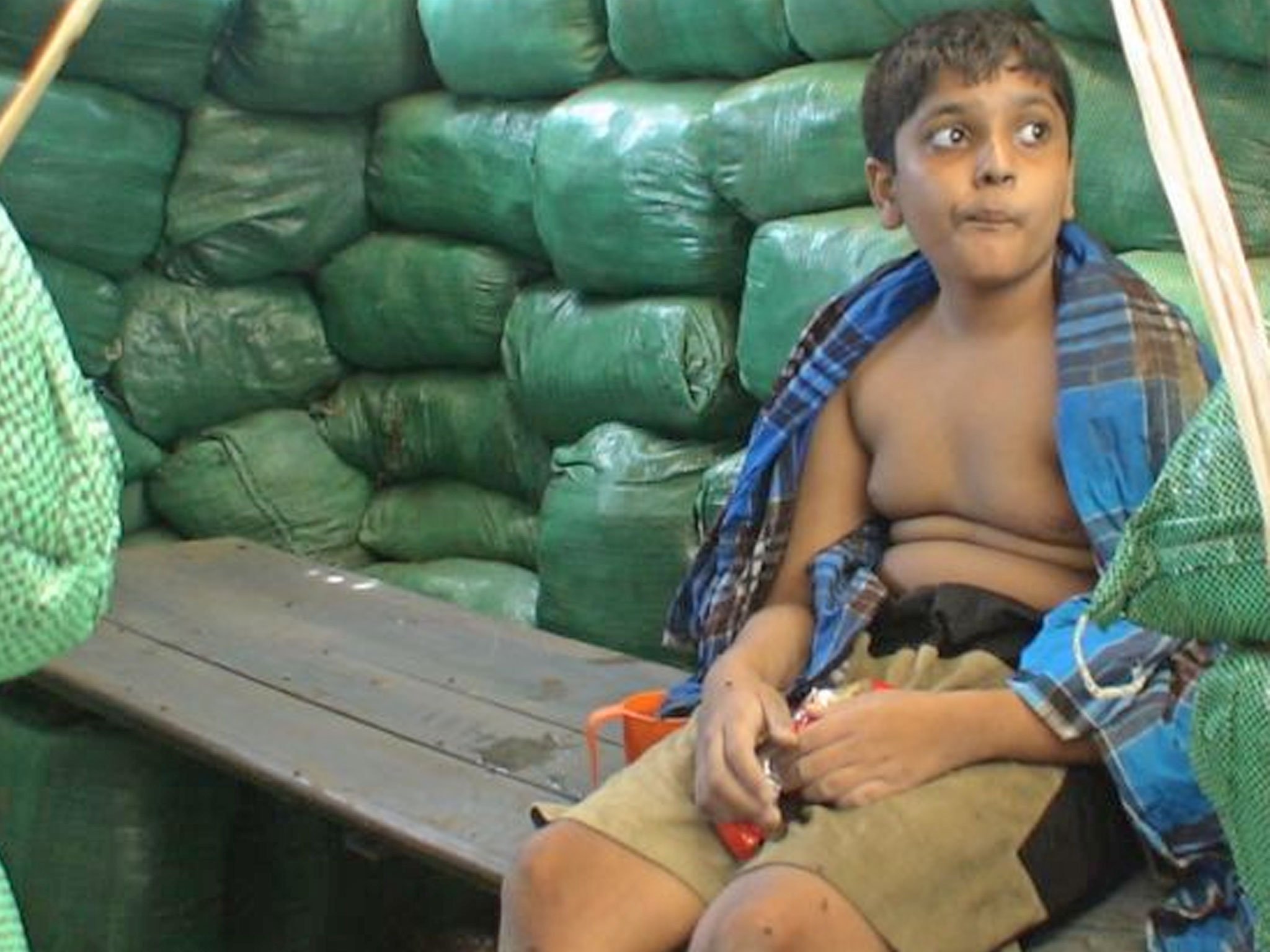Photograph: Balachandran Prabhakaran pictured in Sri Lankan military custody. Later photographs show him dead, with several bullet wounds in his chest.
The Sri Lankan military claimed that it did not receive any surrendering Tamil fighters during the closing stages of the armed conflict in 2009, in an extraordinary denial of its role in the disappearances of hundreds of LTTE cadres.
Responding to a Right To Information (RTI) Act request, the Information Officer of the Sri Lanka Military, Brigadier Sumith Atapattu, who was part of the Mechanised Infantry regiment claimed “LTTE members have not surrendered themselves to the Sri Lanka military during the last stages of the war and they have handed themselves over to the Sri Lankan government”.
“As the institution with authority to deal with matters regarding surrendered LTTE members is the Bureau of the Commissioner General of Rehabilitation, you are kindly requested to obtain the required information from them,” the military response continued.
The RTI request had been filed by Tamil Mirror Journalist, P Nirosh Kumar.
The response directly contradicts several prior statements from the military which confirmed that it did receive surrendering Tamil fighters and their families.
JDS Lanka reports that there were several instances in which the military confirmed LTTE cadres had surrendered to the army, including in 2012 when a Sri Lankan army Court of Inquiry (COI) acknowledged that the military captured LTTE cadres, in 2013 when Gotabhaya Rajapaksa told journalists that 11,800 cadres had surrendered to the military, in 2016 when a senior military commander in the 58 Division said the army had kept a list of all those who surrendered and in 2018 when two ministers from the Rajapaksa administration acknowledged that those who had surrendered to the military had been killed.
See more from JDS here.

Hundreds of LTTE cadres, their families and other Tamils civilians are known to have surrendered to the Sri Lankan military and were executed. Others have been forcibly disappeared.
Last year the ITJP released the names of at least 293 people who were seen surrendering to the Sri Lankan military and have seen been disappeared. Among those is Father Joseph, who was last seen boarding a Sri Lankan military bus with several LTTE cadres whose surrender he had facilitated.
The OHCHR Investigation on Sri Lanka (OISL) states,
“There are also reasonable grounds to believe that a number of LTTE cadres, such as those belonging to the political wing, and other individuals not or no longer taking direct part in hostilities, including children, were also extrajudicially executed.
“Based on this forensic analysis of photographic as well as video material, witness testimonies and open sources, OISL concludes that there are reasonable grounds to believe that LTTE senior political wing leaders Balasingham Nadesan and Seevaratnam Puleedevan as well as Nadesan’s wife Vineetha Nadesan may have been executed by the security forces sometime after 06:00 on 18 May.”
See more from the ITJP on this particular case – dubbed the White Flag incident - here.
Amongst the other emblematic cases are those of LTTE leader Colonel Ramesh who was filmed in Sri Lankan custody, being interrogated by soldiers. Later photographs show he was shot dead. Balachandran Prabhakaran, the 12-year-old son of the LTTE leader Veluppillai Prabhakaran, was also photographed in military custody and then shot dead, as well as Tamil TV presenter Isaipriya.
Several videos have since emerged, captured by Sri Lankan soldiers on their mobile phones, as they execute naked and tied up Tamils. Some laugh as they shoot the blindfolded Tamils in the head.

Tamil families in across the North-East have been campaigning for over two years for answers about their disappeared relatives, many of whom surrendered at the end of the war.
We need your support
Sri Lanka is one of the most dangerous places in the world to be a journalist. Tamil journalists are particularly at threat, with at least 41 media workers known to have been killed by the Sri Lankan state or its paramilitaries during and after the armed conflict.
Despite the risks, our team on the ground remain committed to providing detailed and accurate reporting of developments in the Tamil homeland, across the island and around the world, as well as providing expert analysis and insight from the Tamil point of view
We need your support in keeping our journalism going. Support our work today.
For more ways to donate visit https://donate.tamilguardian.com.


